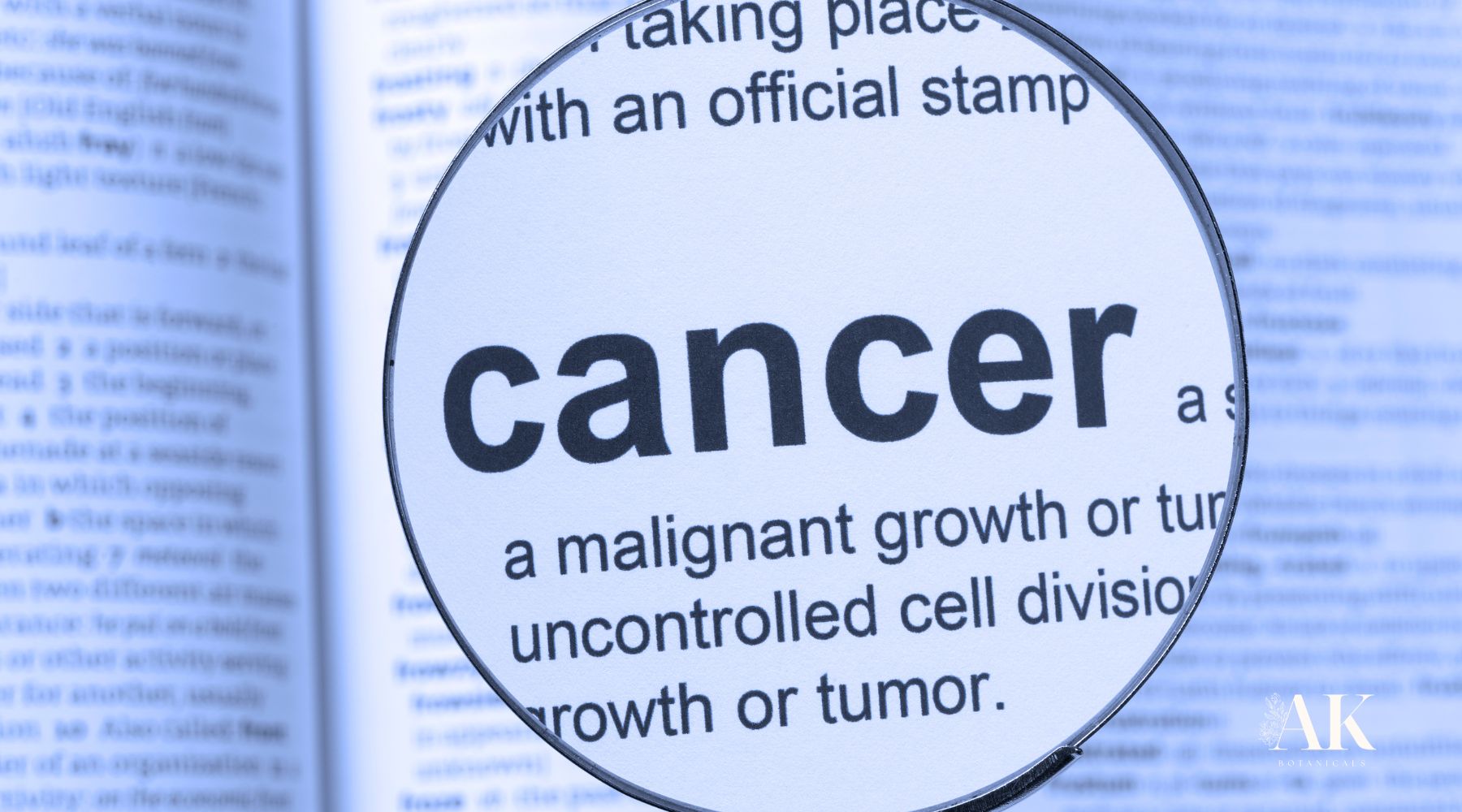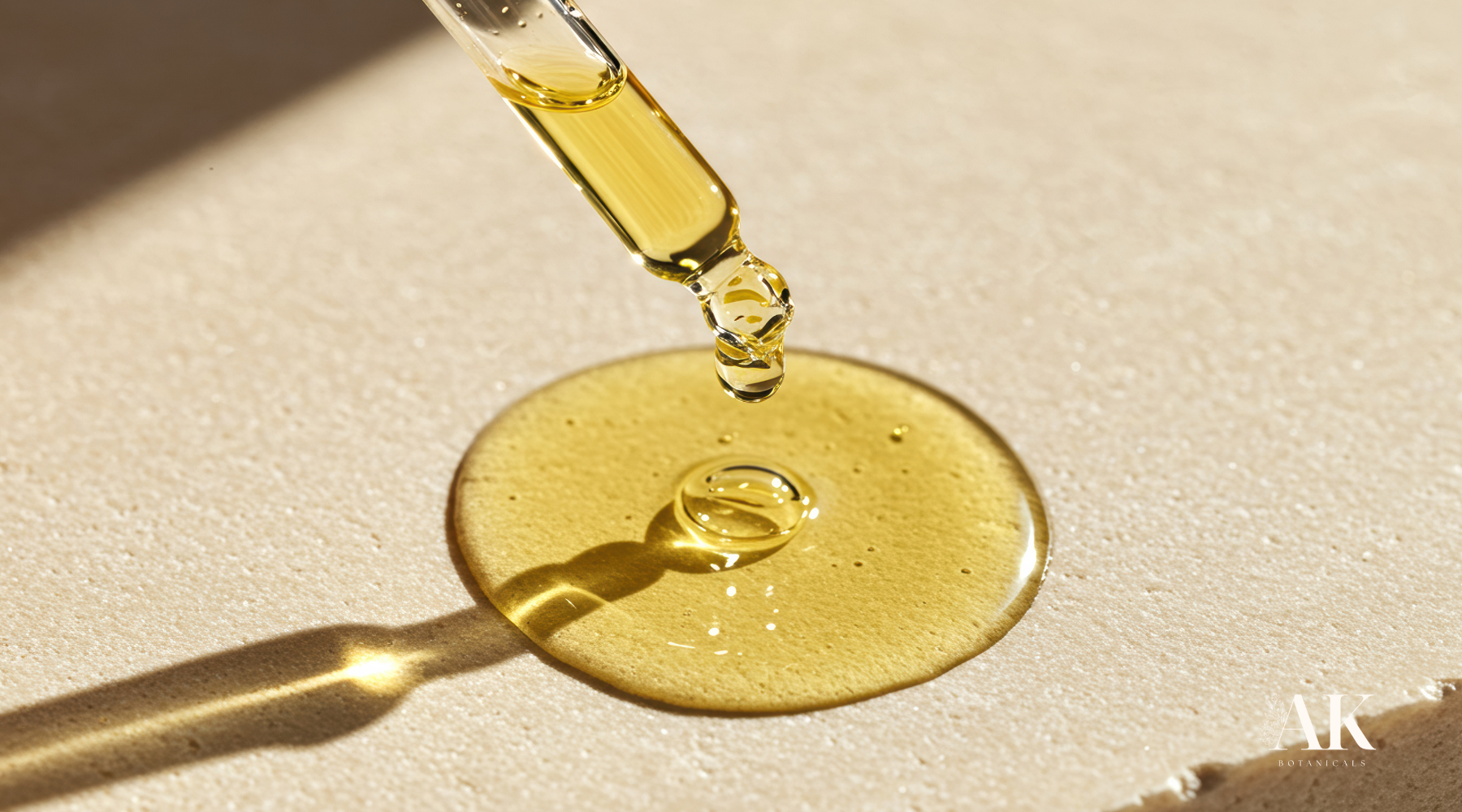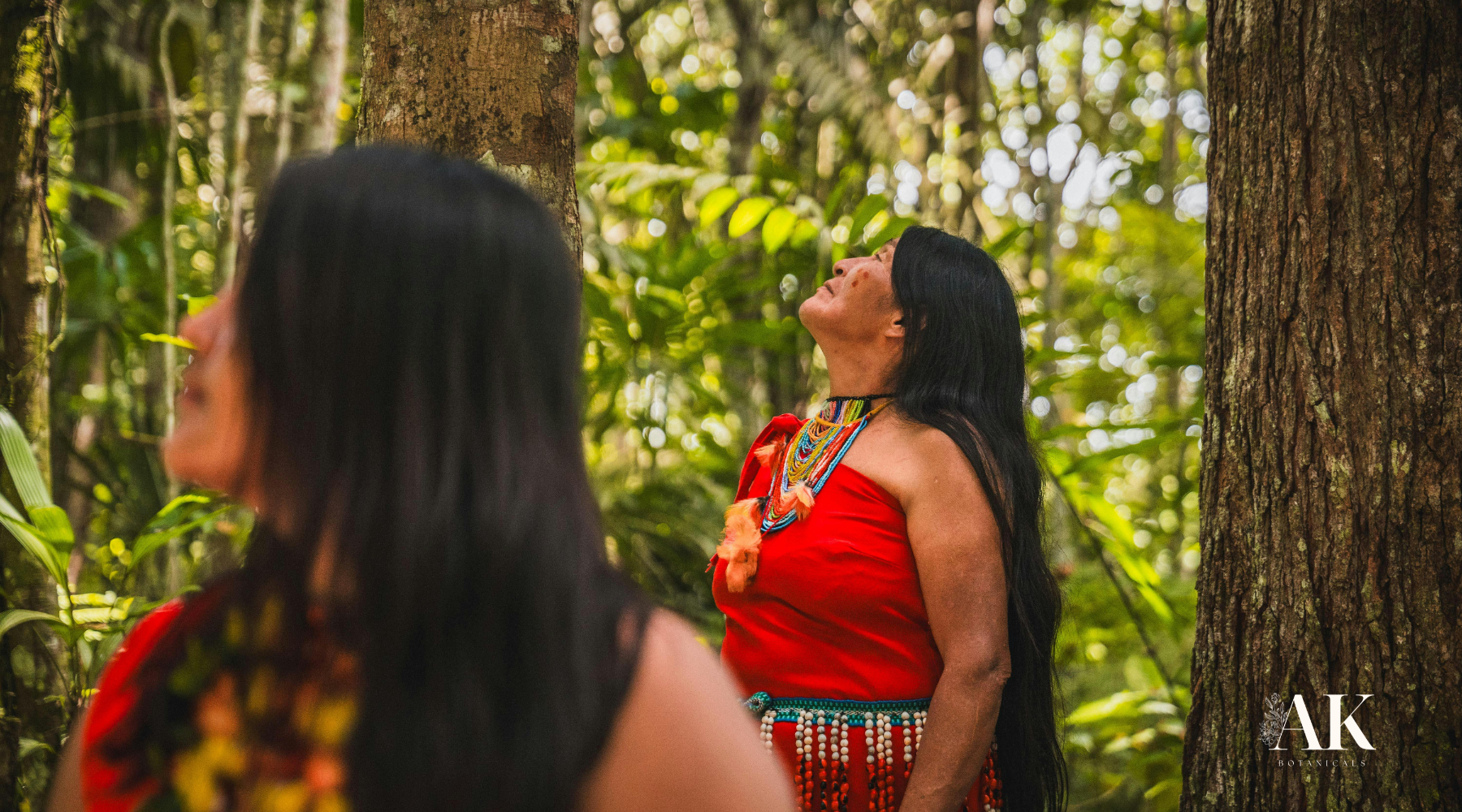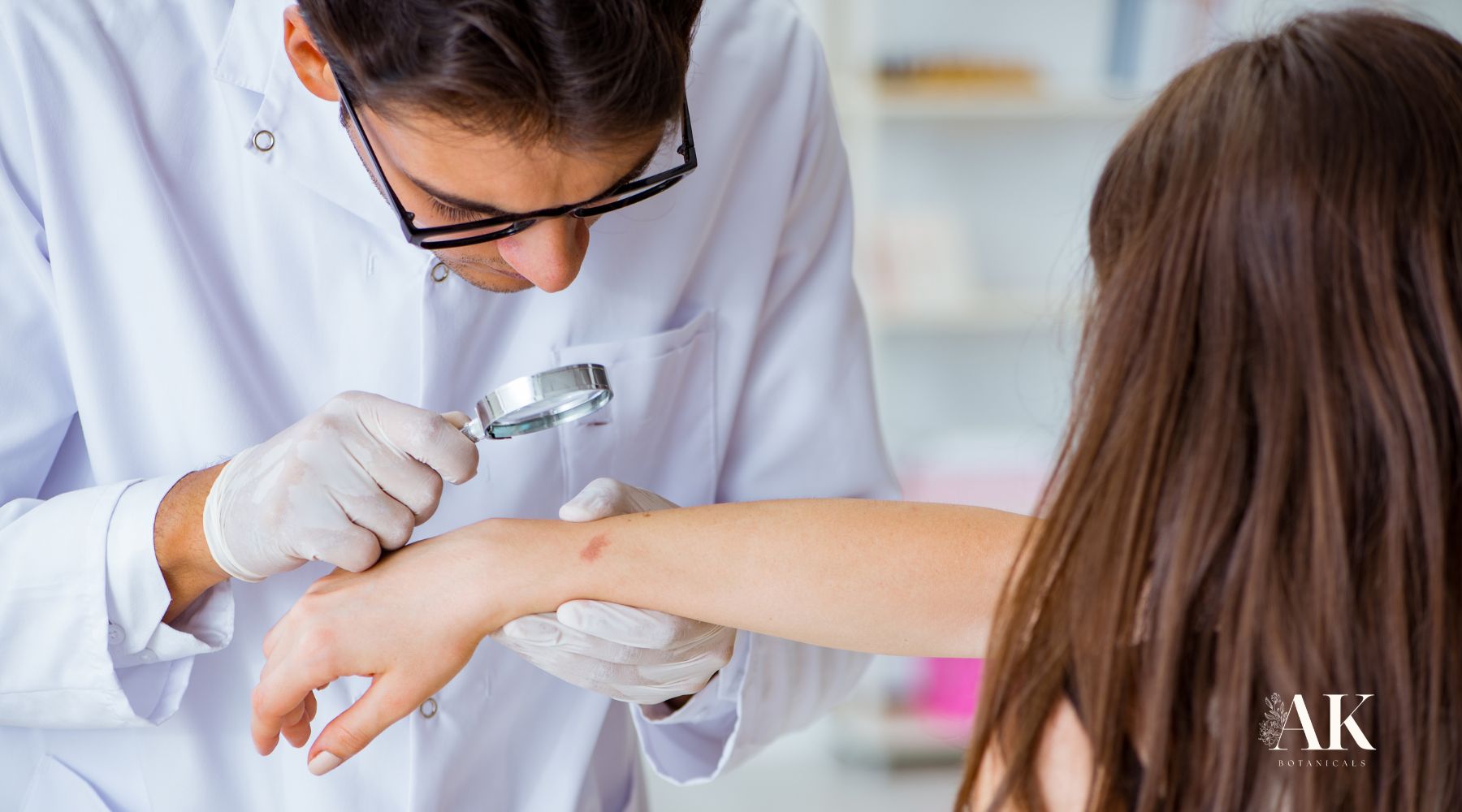
When Does Actinic Keratosis Become Cancerous?
You might not notice it in the mirror at first, but you can feel it. When you run your hand across your cheek or arm, there’s a small, rough patch of skin that doesn’t smooth out. It feels dry and gritty, like sandpaper. At first, it seems harmless, just another sign of sun exposure.
Over time, though, the patch can change. It may become thicker, red, or crusty. Some spots itch, while others feel tender. Even if one fades, it often comes back—reminding you that sun damage doesn’t simply go away.
That’s what Actinic Keratosis (AK) feels like for many people—a quiet but persistent signal from your skin, asking you to pay attention.
And the pressing question most people have is: When does actinic keratosis actually become cancerous?
The Roots of Actinic Keratosis (Why It’s Considered Precancerous)
Your skin is the largest organ of your body. It is the body's frontline defender. Every day, it absorbs ultraviolet (UV) radiation from the sun. Over years, UV rays damage DNA inside skin cells. The body repairs much of this damage, but not all.
When repair systems falter, abnormal cells accumulate. These cells form patches that don’t heal, resulting in actinic keratoses.
-
Risk factors include fair skin, light eyes, blonde or red hair, frequent sun exposure, tanning beds, and age over 50.
-
Locations often include the face, ears, scalp, neck, forearms, and hands—the body’s sunniest real estate.
AK is considered precancerous because it has the potential to contribute to cancer development if left untreated.
Actinic Keratosis vs Cancer: When to Worry
Actinic keratosis is often called a precancerous skin lesion because it can progress to squamous cell carcinoma (SCC). But the transformation is not guaranteed.
-
Precancer stage: Cells are abnormal but confined to the top layer of the skin (epidermis).
-
Cancer stage: Cells break through the basement membrane, invading deeper layers. This shift marks the transition from AK to SCC.
Dermatologists sometimes use the term “early SCC in situ” for AKs that are borderline between precancer and cancer.
AK can be most closely linked with squamous cell carcinoma, having multiple lesions, but it also signals an increased risk of other forms of skin cancer. People with extensive sun damage may be monitored more closely not just for SCC but also for basal cell carcinoma and, in some cases, melanoma.
How Often Does Actinic Keratosis Become Cancerous?
The statistics tell a cautious story:
-
Each actinic keratosis (AK) has about a 6–10% chance of turning into squamous cell carcinoma (SCC) over ten years. (American Cancer Society Journals)
-
If you have more than one AK, your overall carcinoma risk goes up because the chances add together.
-
In fact, research shows that around 60% of cutaneous squamous cell carcinomas start out as untreated actinic keratoses.
Still, not every AK becomes dangerous. Some stay stable for years. Others vanish and reappear. The unpredictability is why dermatologists emphasize monitoring and treatment.
How Long Does It Take for Actinic Keratosis to Become Cancerous?
There is no exact timeline. In some cases, an actinic keratosis may transform into cancer within months; in others, it may remain unchanged—or regress—for years.
Progression depends on factors such as:
-
How much cumulative sun damage the skin has endured
-
Whether the immune system is functioning at full strength
-
The presence of mutations in tumor-suppressor genes like p53
Because timing is unpredictable, dermatologists treat AKs as active risks, not “wait and see” lesions.
The Warning Signs of Progression
So, when should you worry that an actinic keratosis might be turning cancerous? Pay close attention if a lesion:
-
Grows rapidly in size
-
Becomes tender or painful
-
Bleeds easily or ulcerates
-
Forms a firm nodule instead of a flat patch
-
Has persistent redness or inflammation around it
These features signal squamous cell carcinoma may be forming. At this stage, prompt medical evaluation is essential.
Why Some Actinic Keratoses Become Cancerous
Not all AKs progress to cancer. Scientists point to several reasons:
DNA Repair Capacity
Some people’s DNA repair genes are more efficient. They correct UV damage before cells spiral out of control. Others carry mutations that make repair less effective.
Immune System Health
A strong immune system spots and removes abnormal cells quickly. Immunosuppressed patients—such as organ transplant recipients—develop AKs and SCCs at much higher rates.
UV Dose Over a Lifetime
Years of chronic exposure build a “cumulative UV dose.” The higher the lifetime sun exposure, the higher the chance of malignant change.
Genetic Mutations
Research shows mutations in the p53 tumor suppressor gene appear frequently in AK and SCC. These changes disable a key safeguard against cancer.
Diagnosis: Spotting the Danger Early
If you see a suspicious lesion, dermatologists can confirm whether it’s AK, SCC, or another condition.
-
Clinical exam: Doctors recognize AK by sight and feel.
-
Dermatoscopy: A magnified view shows scale, color, and vascular patterns.
-
Biopsy: If cancer is suspected, a small tissue sample provides a definitive answer.
Because AK lesions look like eczema, psoriasis, or even warts, professional evaluation matters.
Conventional Treatment Options
Once diagnosed, dermatologists recommend treatment to lower cancer risk. Options include:
-
Cryotherapy (liquid nitrogen): Freezes and destroys the lesion.
-
Photodynamic therapy (PDT): Uses light-activated drugs to kill abnormal cells.
-
Topical medications: Prescription creams like 5-fluorouracil, imiquimod, or diclofenac.
-
Curettage or excision (surgery): Scraping or cutting out suspicious lesions.
Each method has trade-offs in terms of pain, healing time, and recurrence.
Supportive Skincare and Botanicals
Alongside medical treatment, many people explore botanical approaches to support skin health. For example:
-
Soursop (Annona muricata): Lab studies show extracts exert cytotoxic effects on abnormal cell lines and possess antioxidant properties.
-
Bloodroot (Sanguinaria canadensis): Traditionally used by Native Americans, its alkaloid sanguinarine has shown anticancer activity in laboratory studies.
-
AKti-Clear™: Our botanically infused skincare product made with ingredients like soursop and bloodroot. It is designed to support overall skin wellness for those with sun-damaged skin.
These findings are preliminary and lab-based. They highlight potential but are not substitutes for medical care.
AKti-Clear™ is not intended to diagnose, treat, cure, or prevent actinic keratosis, skin cancer, or any disease. Always consult a dermatologist regarding actinic keratosis or other skin concerns.
Lifestyle Choices That Reduce Risk
While you can’t undo past sun exposure, you can protect your skin going forward.
-
Wear broad-spectrum sunscreen (SPF 30+) daily.
-
Cover up with hats, long sleeves, and sunglasses.
-
Avoid peak UV hours between 10 a.m. and 4 p.m.
-
Skip tanning beds, which deliver intense UV radiation.
-
Check your skin monthly for new or changing lesions.
These actions lower your risk of both AK and skin cancer.
Living With Actinic Keratosis
Hearing the word “precancer” often sparks anxiety. Many people feel worried every time they find a new spot. But it’s important to remember:
-
Early treatment works. Dermatologists treat AKs successfully every day.
-
Follow-ups matter. Regular check-ups catch changes before they escalate.
-
You are not alone. Millions live with and manage AK.
By staying proactive, you take back control.
When Does Actinic Keratosis Become Cancerous?
So, back to the central question: when does actinic keratosis become cancerous?
-
When abnormal cells penetrate deeper skin layers.
-
When lesions evolve into firm, painful, or bleeding nodules.
-
When unchecked UV damage and genetic changes push cells beyond the “point of no return.”
But there’s no precise clock. An AK might transform within months—or never. That uncertainty is why dermatologists treat them seriously from the start.
The Future of Research
Scientists continue to explore:
-
Molecular markers that predict which AKs will progress.
-
Combination therapies that improve clearance rates.
-
Botanical compounds like soursop and bloodroot that may one day inspire supportive therapies
-
This evolving field promises more precise answers in the future.
Actinic keratosis is the skin’s way of telling you it’s been through too much sun. Most AKs never become cancerous, but some do—and predicting which is tricky. That’s why monitoring, professional care, and prevention are essential.
Dermatologists remain your best allies. With regular check-ups, protective habits, and supportive skincare, you can lower your carcinoma risk and keep your skin healthier for longer.
Disclaimer: This article is for informational purposes only. Actinic keratosis requires professional evaluation. Always consult your dermatologist for diagnosis, treatment, or concerns about skin lesions.




